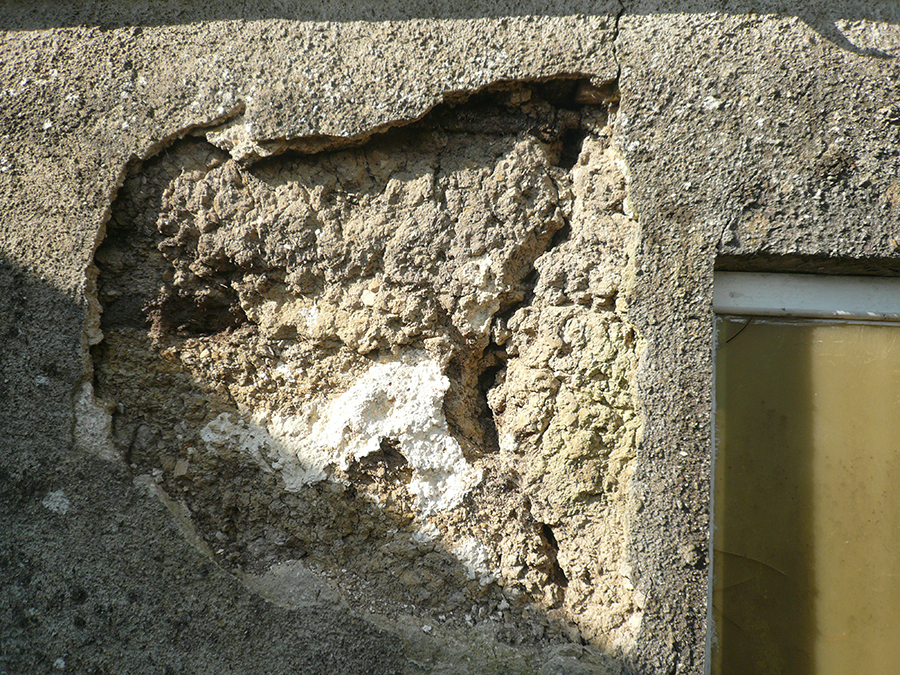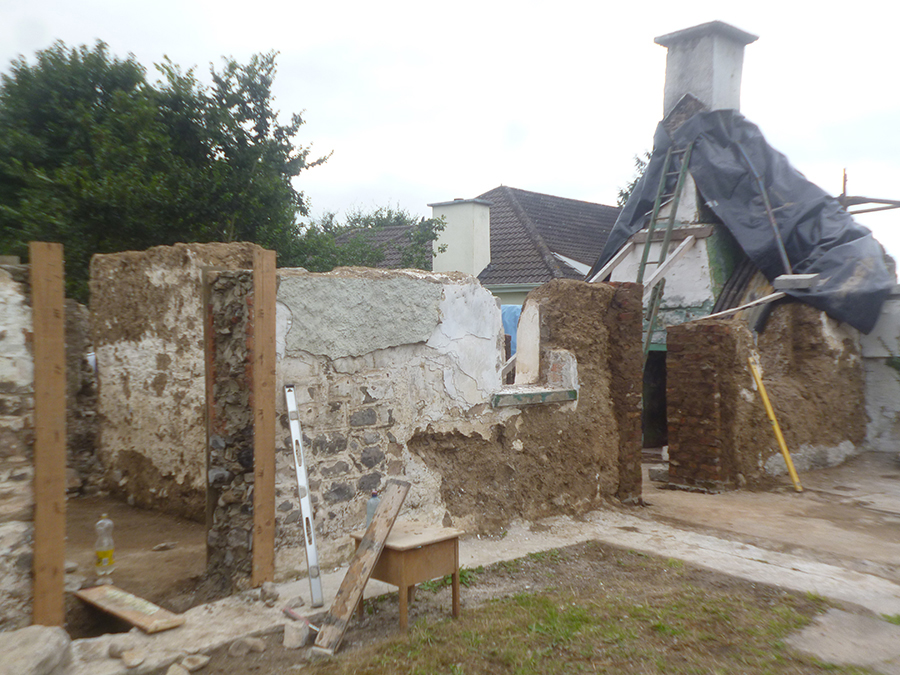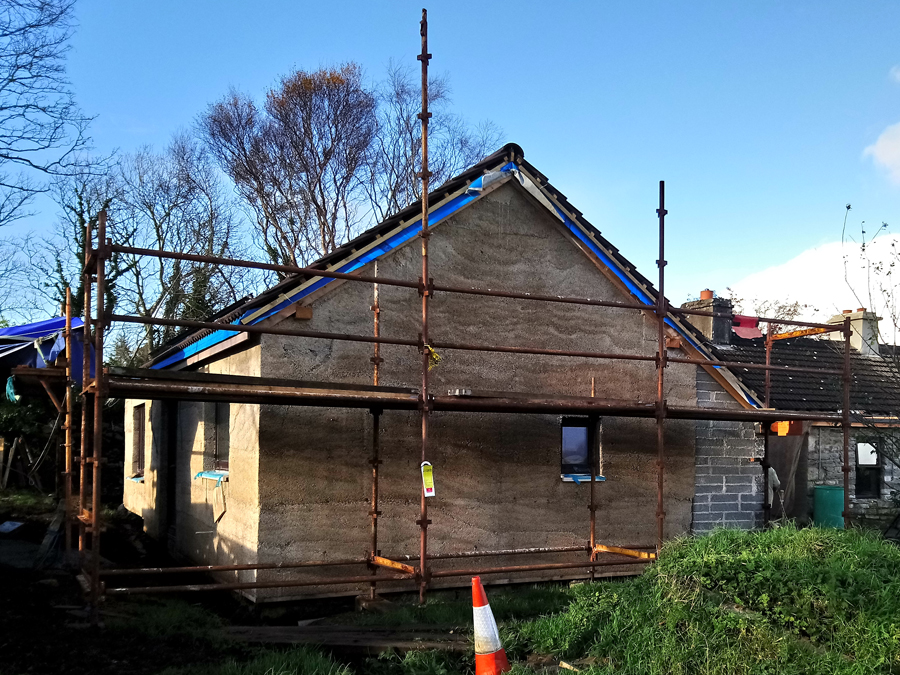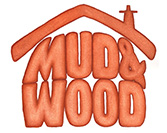Insurance and Natural Building
25th February 2018
Some of you may be aware that Simon and Jasmine Dale's eco-house in Lammas burned down on New Year's Day. It took 6 years to build and cost them £27,000 (hailed as the cheapest family home in the Western hemisphere). Now they are trying to raise £20,000 to start building again. Their home was not insured.
The most recent government statistics show that emergency services in Ireland dealt with just under 5,000 residential fires in 2016. 65% of these were chimney fires. 30% were house fires. 5% occurred in apartments, mobile homes and caravans. While it is something that none of us want to dwell on, the reality is that homes go on fire, houses get flooded and buildings can be damaged. And so insurance might be something you want to consider. But is it possible to insure a naturally built home?
When we first started looking into the issue of house insurance, we discovered that we were being quoted premiums three to four times those of conventionally-built homes. I thought it was ignorance on the part of the insurance companies; that they really didn't know what they were dealing with, they didn't trust or understand this left-field form of construction, and therefore they were hiking the prices because they thought this type of building was inherently riskier.
In some cases, this was true. I had one insurance representative inform me that he would not consider insuring our cob home because of our "non-waterproof" lime render. He felt that our earth walls needed more protection from the Irish weather and a cement render would do the trick. I wrote a long letter back to him pointing out that since cement and concrete became widely and cheaply available from the 1950s onwards, they have caused more damage to our historic mudwall buildings than any other intervention. We see the inappropriate, failing and destructive repairs and blame the original material. I informed the well-meaning rep that cement render sounded a death knell for cob and his 'learned' recommendation would only serve to destroy our earthen walls. Needless to say, he didn't respond with a quotation.
 |
|
100+ Year Old Mud Wall Damaged by Cement Render - Photo: Mud and Wood
|
I was recently at a seminar on insurance for protected structures (listed buildings) and unusual construction. And it turns out that when you are dealing with insurance companies that do actually know something about more unconventional forms of construction, these high premiums do not necessarily stem from an idea that these buildings are more likely to go on fire, or will suffer more damage in a flood, compared with mainstream houses. Owners of natural homes are being penalised precisely because they are not mainstream. They are niche.
Many of you are aware that cob does not burn. We use it to build pizza ovens for that reason! (And if you want to learn how to do that, come along to our Cob Oven Course: 19 - 20 May). You can see from the photo above that all of the cob walls of this 500 year old longhouse in Dorset are still intact and standing following a major fire, although looking somewhat worse for wear.
Fire is not actually the greatest threat to an earth-built home. But the cavalry can be. Once a fire takes hold and all occupants are safely outside, the most efficient way for fire-fighters to extinguish a blaze is to pour gallons and gallons of water on the building. And this water can cause damage, either to the structure itself or to the finishes.
In the case of the house above, there were no commercial earth builders available to take on the work when extensive repairs were required following a fire. So a team had to be brought in from England. This costs a lot of money compared with hiring Jimmy the builder from down the road. Many natural homes are self-built and one could argue that it would be the owners who would carry out the repairs, negating the need for teams of specialist builders with potentially long waiting lists. However, the reality is that the insurance companies must plan for the absolutely worst case scenario.
What if the catastrophe meant that either you or one of your family had been injured and were not physically able or were not in the headspace to take on the work yourself? Maybe your life has moved on and you now have a full-time job or other commitments that didn't exist when you first built the house. Where will you live while the repairs are being carried out? And if the work is not mainstream and you need to wait a while for a competent contractor, or the work is slow by its nature, then how long will you need to stay in your alternative accommodation? What if you need to bring the contractors from far away or from abroad? What if specialist training must be provided to a local contractor? You can see how the costs could start to mount. And when an insurer is deciding to provide cover for your home, he/she needs to be sure that all of these potential costs can be accommodated.
 |
|
150+ Year Old Mudwall House after Fire, Co. Kildare - Photo: Mud and Wood
|
Some people might be tempted to omit the fact that their walls are made of mud or straw bales or hempcrete when filling out an insurance proposal form, so as to avoid high premiums. This is not a good idea. The insurance industry relies on the concept of Utmost Good Faith and Full Disclosure. If you let them think that your home is built of concrete blocks, but you need repairs to be carried out on a previously undeclared cob wall, then the insurance company could refuse your claim.
 |
|
Straw Bale Walls - Photo: Mud and Wood
|
Many insurance policies also contain a provision called the Average Clause. If you undervalue the cost of rebuilding your home by more than 15%, then the Average Clause (if it exists in your policy) can be activated. This means that the insurance company need only pay out 50% of your claim. It is a formidible disincentive to prevent people from undervaluing their properties.
For example, if you self-built your home for €100,000, this does not necessarily mean it could be rebuilt for €100,0000, should it be razed to the ground. You need to factor in that you may not be able to rebuild it yourself due to injury or life changes, you may have to wait 6 months or more to engage a contractor competent in unusual construction methods (building up your own alternative accommodation costs) or may have bring in a contractor from abroad (building up their accommodation and travel costs), or wait for the Spring (work with lime should stop when temperatures hit 6°C and falling), you will not have all of your (free or cheap) salvaged materials to hand, etc. Your €100,000 house may actually cost €300,000 or €400,000 to rebuild! And it's not you who gets to decide this. When you have insurance, the insurance company takes over and runs the show the way that they see fit.
Looking at the example above, if you insured it based on a rebuild figure of €100,000 (what it cost you to build it first time around), you could be short by €200,0000 to €300,000. But because you undervalued the cost of rebuilding your home by more than 15%, the insurance company may only pay out 50% of your claim, or €50,0000 in this case. The Average Clause packs a double whammy, leaving you even more out of pocket.
 |
|
Hempcrete (hemp and lime) Walls - Photo: Mud and Wood
|
So how can you estimate the cost of rebuilding your home accurately, and therefore insure it properly?
As outlined above, the original cost of construction or the cost you paid for your home does not necessarily equate to the cost of rebuilding it. This is not a safe way to calculate reinstatement costs. Mortgage valuations are unreliable too. The banks are only concerned about covering the cost of the loan, They don't actually care about the total cost of reconstruction. The Society of Chartered Surveyors in Ireland provides a rebuilding cost guide. But this is only appropriate for standard construction.
For non-maintstream construction, you may want to consider engaging a surveyor/valuer, who will be able to examine the many aspects of rebuilding your home that you may not have taken into account. Look for insurance companies that have experience in covering listed buildings, Georgian and Victorian properties, thatched cottages, etc. They should be able to recommend a competent valuer/surveyor with experience in non-conventional construction. And it is critical that they do have an understanding of the materials involved in your construction. Should they need some additional advice in this area, you can always point them in our direction for a consultation, feile@mudandwood.com.
Generally speaking, these specialist insurance companies who liaise with surveyors/valuers do not apply the Average Clause to their policies. However, it is always prudent to check that. By dealing with a valuer who will provide a bespoke estimate for your exact circumstances, you will have displayed to the insurance company that you have made every effort to accurately value your building. The good news in these circumstances is that the insurer is then obliged to cover the costs, no matter what they actually amount to. For example, you, the valuer and the insurance company all agree that €300,000 is a fair estimate for the cost of rebuilding your home. You have disclosed all facts about the building. Disaster strikes, but it actually costs €375,000 to reinstate your house. The insurance company will cover that additional €75,000.
At the seminar, we were given a few tips which can help to bring risks down, which in turn can have a positive effect on your insurance premium.
- The top cause of fires is faulty wiring. Get your wiring checked and certified.
- The second biggest cause of fires is tumble dryers. If the lint filters are not properly cleaned out, they can spontaneously combust. Buy a tumble dryer that will not operate unless the lint filter has been cleaned out.
- Externally monitored smoke detectors can mitigate risk (and therefore reduce your premium). How? If a fire brigade can reach a fire within the first twenty minutes, it is far more likely that they will be able to bring it under control without having to resort to pumping gallons and gallons of water into the building. However, this may not be an option if you live more than 20 minutes away from the nearest fire station, as is often the case in rural Ireland.
It is clear that as long as natural building remains specialist and niche, there will be additional insurance costs to pay compared with conventionally-built homes. Until there is a sizeable pool of commercial natural builders to draw from, it will be difficult to resolve this issue.
Many of you know that I am involved with th group Earth Building UK and Ireland (EBUKI). Over the past few years, much work has been done with our European partners on developing training standards for earth builders. The standards are divided into different Levels. The higher the level, the more you are expected to know and to be able to do. You can check out some of the training units for cob construction here and for mixing earth materials here. If you want to check out the full, extensive range of training units, click here. In the UK, earth building is now recognised as an official occupation. Training is up and running. EBUKI is now working on providing official assessors, who can award earth building qualifications which will be recognised throughout Europe. We expect the first of these to come online in 2018/2019.
There always will be and must be room for self-builders. But if natural building is to become more mainstream .... and it needs to if we are to preserve our planet .... then there also needs to be an official career path for commercial natural builders. The more of them there are, the more natural homes can be built ... and the more insurance premiums will fall.
Copyright 2018, Féile Butler - Mud and Wood
|





